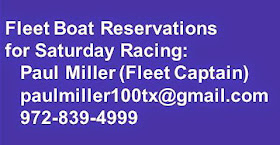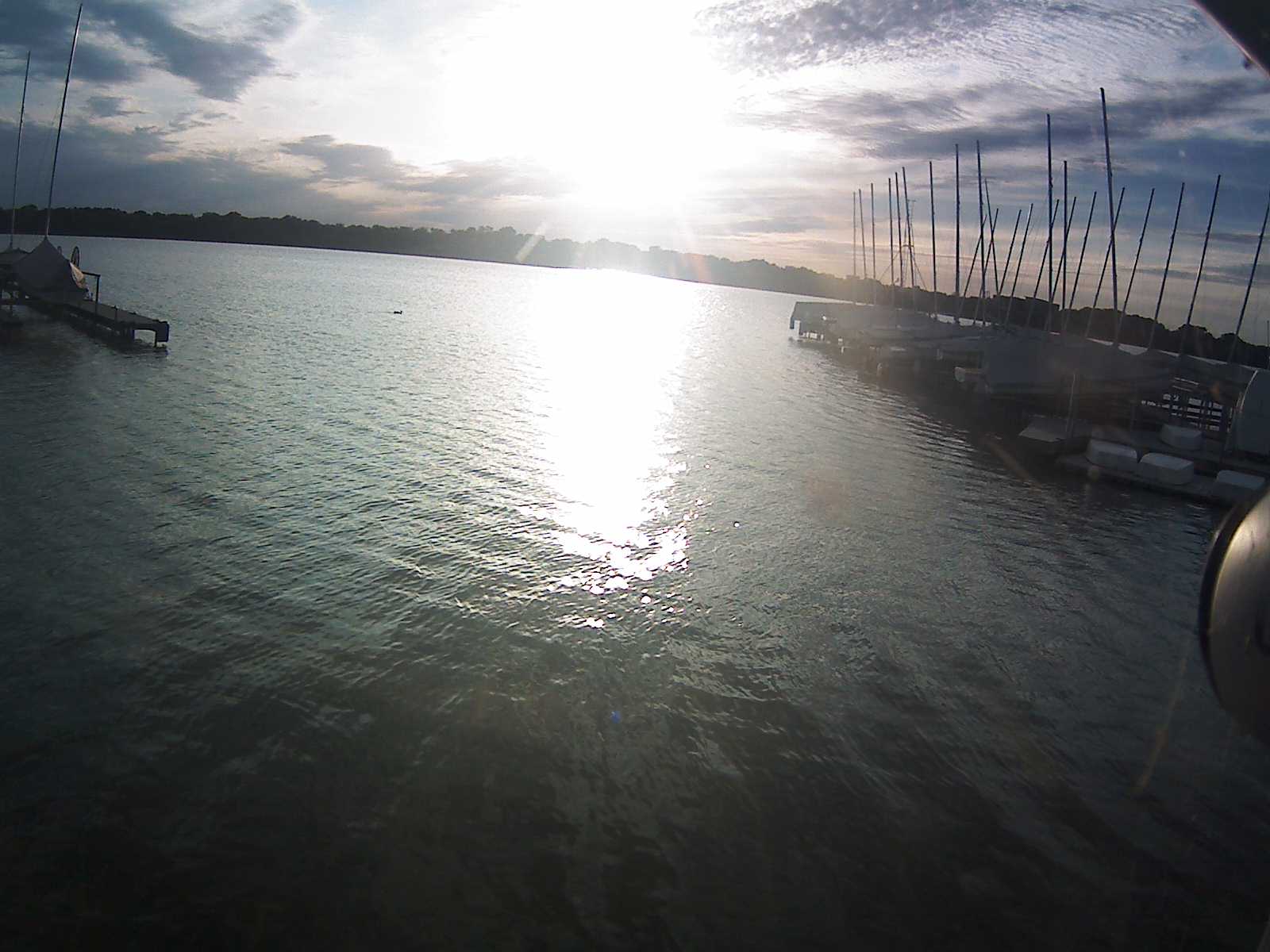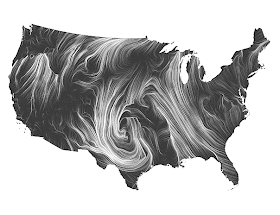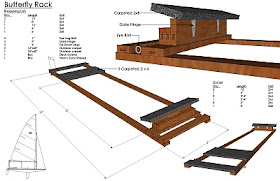FOOT TO THE HEADER
at 4.22.2009
Copyright (c) 2009 Scott Young
Hallelujah! Scott Young has caught the blog bug. I was going to post his “Foot to the Header” article but it will soon be available on his blog http://www.scottyoungsailing.blogspot.com/ along with some other good articles that he has written. Be sure to visit and bookmark it. The site is still under construction but looking quite good. I'll be posting the full article here later.
It's later ...
See if this makes sense. You see something that you want and it is right over there. You know where it is and you know how get there….so…do you go slow to get to something you want or do you put the pedal down and sail like crazy to get there?
When trying to “connect the dots” on the upwind leg, generally, the most “lifted” part of the “lift” is right after you tack on or just under the first hint of the shift. As I have discussed in previous articles, it is very unusual for a wind shift on Lake Travis to last more than just a few minutes, so it is imperative to take full advantage of the lifted shift (say that 5 times real fast).
I like to tack just as I feel the puff “slap me in the face”, which essentially is that very slight backwind you get in your jib or main sail just as you feel the increase in wind velocity. Sometimes, you can even feel a difference in the temperature of the wind or maybe even the humidity level. This is especially noticeable before a front comes in and the wind has clocked around to a southwesterly direction. The right puffs always feel warmer and dryer and the left (southeasterly) puffs feel more humid and cooler. The difference in humidity and temperature can be very noticeable.
Don’t sail into the puff / shift for 30 seconds like the text books tell you to do in open water. If you do that on Travis, you will be on the back side of the shift (not a good place to be!) Once I tack, I try and take advantage of the lift for the first minute or so but after basking in the lifted glow for a very short amount of time, it is time to start looking for the next shift. Once I see the wind next oscillation coming down (usually on Travis, from the opposite side of the lake), I like to put the bow down and go fast to the next shift.
As you start sailing into a header, the boats upwind on the same tack tend to start falling into the boats that are to leeward. I like that feeling of edging out to leeward of the boats on my windward hip as the shift begins to approach. It can be quite demoralizing if you are the windward boat, watching the boat to leeward of you starting to squeeze forward in your jib or main sail window. When this begins to happen, the situation is only compounded by the fact that the helmsman of the windward boat is probably looking to leeward, trying to assess the damage being done and as a result, starts sailing his / her boat lower than is probably necessary (you tend to steer where you look…just like a car)....and the problem is only compounded.
When you get into this situation, and you know in your heart of hearts that you are losing your shirt, try to fight off that intense feeling to tack off prematurely. Keep in mind, you are probably doing exactly the same thing to the boat(s) that are above you. In other words, everyone is usually experiencing similar pain. So….what do you do?
First, if you think you are going the right way to get to the next shift, try and go as fast as you can…provided that you are not going to lose your lane by sailing fast. You have to weigh the desire to get to the next shift as soon as possible with maintaining clear air or a clear lane to get to where you want to go. Last month, I discussed the incredible talent it takes to be able to sail with a boat on your immediate lee bow in order to stay in phase with the wind shifts. This is the time to really focus and sail the heck out of your boat to maintain the ability to go where you want to go.
Once you get to the shift, the boat to leeward and ahead of you is likely to tack right on the shift. What do you do then? It depends. If the wind is shifting back and forth in a quick oscillating fashion as is the norm on Lake Travis, I would rather tack just to leeward and if necessary, even slightly behind (but just out of their wind shadow) of the boat that tacks on the shift. I want to put myself in the position to lead the windward boat to the next shift.
If you cross behind the boat that has just tacked on the new shift, the odds are that you will get on their windward hip and exactly the same thing will happen again. Eventually, the header will start to appear and the lead boat to leeward of you will start to squirt forward.
If you are sailing in open water where the shifts take much longer to oscillate, crossing the lead boat’s transom and taking a position on their weather hip can work satisfactorily….particularly, if you crossing towards the direction of the more persistent wind shift trend (i.e. Houston or Corpus….the wind is gradually shifting to the right as the day does on).
As always, the goal is to get on the tack that takes you closest to the weather mark. Where have you heard that before?? It almost never pays to sail into a continuous header on Lake Travis in an attempt to gain leverage on your competition. On a lake, that will usually result in being chronically “out of phase”.
At the racing clinic that was held a few weekends ago, someone asked a question about what to do if you are behind your competition on the last weather leg of the race. This was really a great question. The answer is… “how can you make the race longer?” The longer the race, the better chance you have to catch up. In this situation, continuing to try and “stay in phase and on the lifted tack”, only plays into the hands of the race leader.
The best strategy is to tack on every lift and to try and sail headers. Definitely the opposite of what we have been talking about for the last several months.
If the lead boat covers too aggressively, he or she will end up in the dreaded position of the windward boat sagging into the leeward boat. Once you have closed the gap enough to be able to engage in a crossing, pick a shift and close the gap enough to put yourself into the position of being able to cross, put a hard lee-bow on the lead boat; or a high speed duck. Never thought I would encourage you to sail headers, did you?
The other potentially positive outcome is that this “slow down” technique can often pull other boats back into the race which gives the lead boat more things to worry about. Instead of focusing all of their energy on you, there may now be a couple of other boats in the picture that they must worry about.
As the lead boat, I would favor more of a “loose cover” strategy. Don’t try and cover your competition so tightly that you are sailing out of phase. And…don’t tack to cover until you are feeling like you are back up to speed or have found a patch of smooth water to tack into.
I have driven my crew crazy over the years by being so obsessed with sailing my own race and staying in phase with the wind that I often discount their encouragement to tack right on top of my nearest competition. In hindsight, I think I have won a lot more races than I have lost by applying a loose cover…ever mindful of being in the proper phase and always trying and get the race over with as soon as possible if I am in the lead.
I often don’t even look back at my competition if I am comfortable with my wind velocity and my angle to the finish line. My rationale is that if I am comfortable with what I am doing, there is no way anyone will catch me. Looking backwards all the time makes you sail backwards.
Next month, I am going to discuss the rounding of the first windward mark and getting set up for the first downwind leg.










4/27/2009 11:33 AM
Sailors check out Scott's excellent sailing tips on his Blog.
GaryE